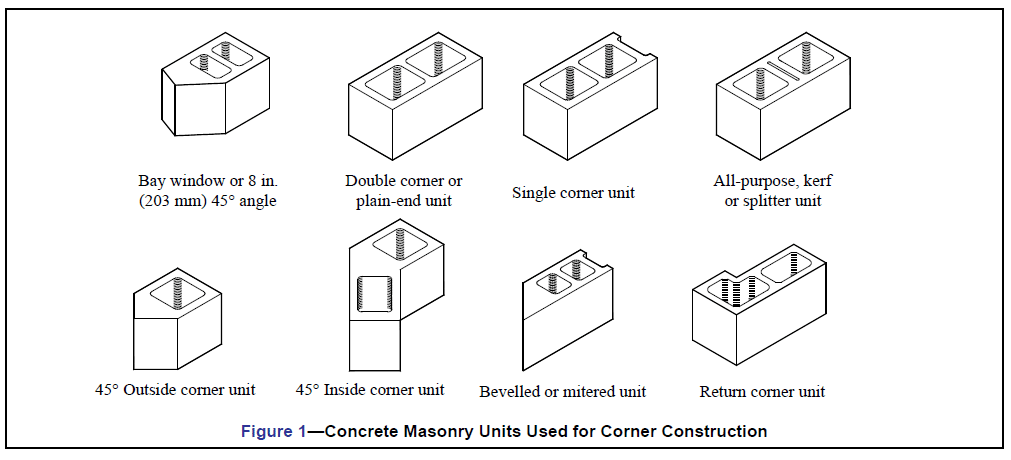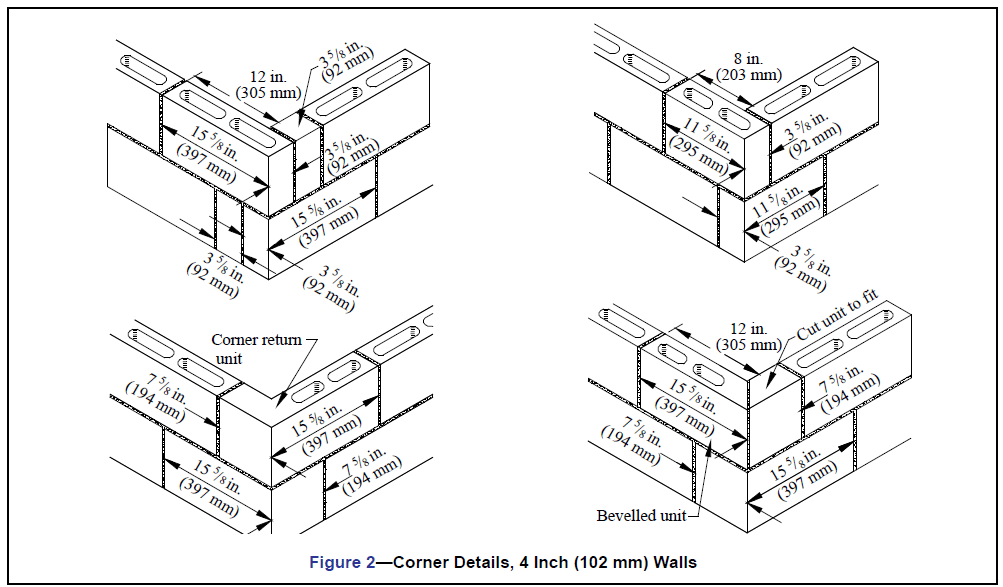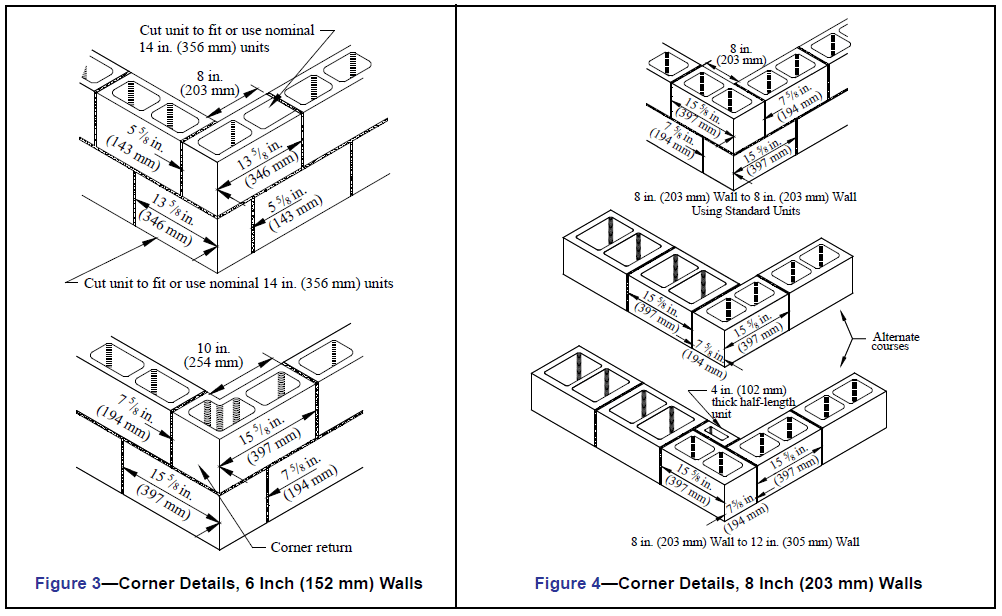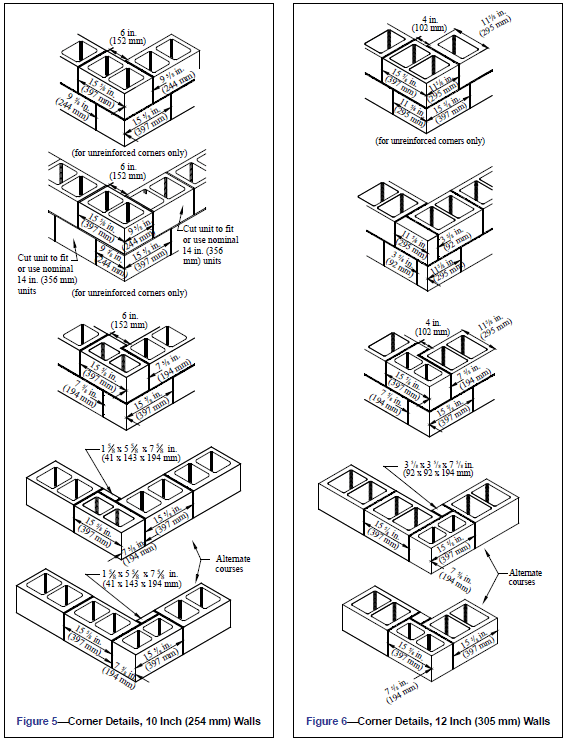INTRODUCTION
A building’s corners are typically constructed first, then the remaining wall section is filled in. Because they guide the construction of the rest of the wall, building the corners requires special care. It is essential that the corner be built as shown on the foundation or floor plan to maintain modular dimensions.
For maximum construction efficiency and economy, concrete masonry elements should be designed and constructed with modular coordination in mind. Corners, however, present unique situations, because the actual widths of standard units are 3 5/8, 5 5/8, 7 5/8, 9 5/8 and 11 5/8 in. (92, 143, 194, 244 and 295 mm). In order to maintain an 8-in. (203-mm) module, special corner details have been developed to accommodate most typical situations.
Figures 2 through 6 show how corners can be constructed to minimize cutting of units while maintaining modularity of the construction. Vertical steel, while not always required, is often used at corner intersections.
UNITS
Unlike stretcher units, units used in corner construction have square ends (see Figure 1). In addition, all-purpose or kerf units are available, with two closely spaced webs in the center that allow the unit to be easily split on the jobsite, facilitating corner construction. Other special units may also be available, such as bevelled-end units, forming a 45° angle with the face of the unit, which are used to form walls intersecting at 135° angles. Units in adjacent courses overlap to form a running bond pattern at the corner. Architectural units, such as those with split or scored faces, are often available with the architectural finish on two sides to accommodate corner construction.
Local manufacturers should be contacted for information on unit availability.




CODE PROVISIONS FOR INTERSECTING WALLS
Building Code Requirements for Masonry Structures (ref. 3) stipulates three options to transfer stresses from one wall to another at wall intersections, each requiring the masonry to be laid in running bond. These three options are via: running bond; steel connectors; and bond beams. Corner construction lends itself to providing shear transfer by relying on running bond.
Running bond (defined as the placement of masonry units such that head joints in successive courses are horizontally offset at least one quarter the unit length) ensures there is sufficient unit interlock at the corner to transfer shear. When any of these conditions are not met, the transfer of shear forces between walls is required to be prevented.
REFERENCES
- Annotated Design and Construction Details for Concrete Masonry, CMU-MAN-001-03, Concrete Masonry & Hardscapes Association, 2003.
- Reinforced Concrete Masonry Inspector’s Handbook, 4th edition. Masonry Institute of America, 2002.
- Building Code Requirements for Masonry Structures, ACI 530 02/ASCE 5-02/TMS 402-02. Reported by the Masonry Standards Joint Committee, 2002.
